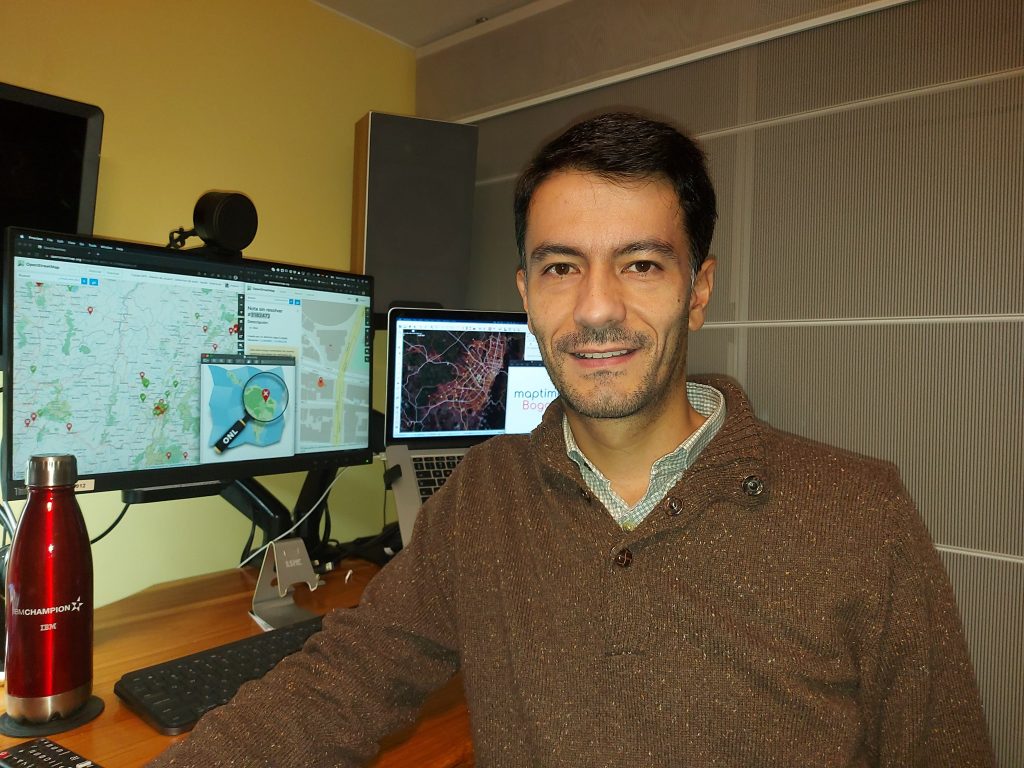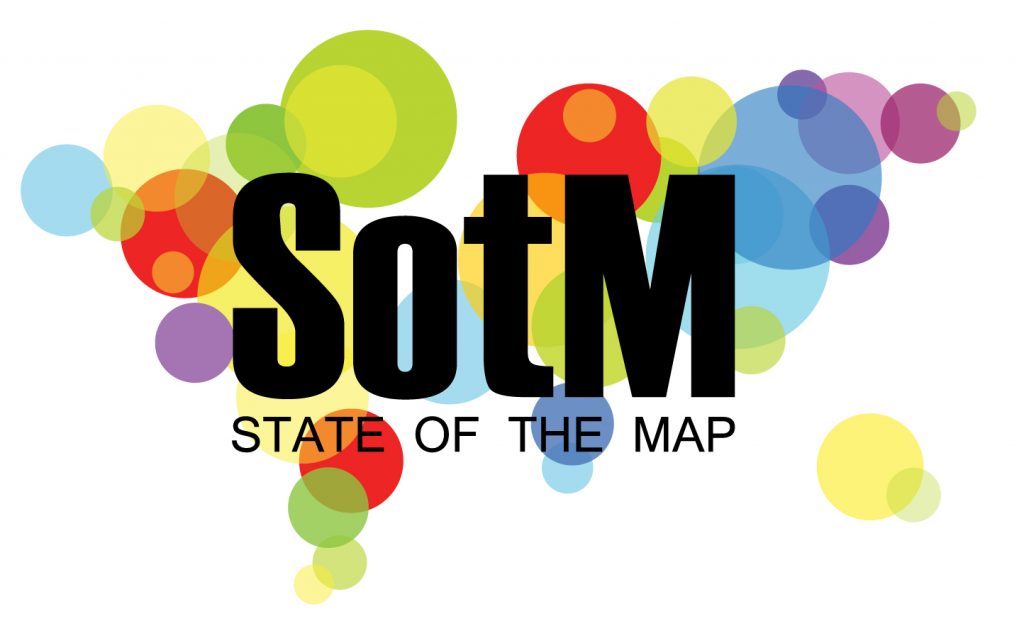Notes is a core feature of the OpenStreetMap.org website. It enables you to add a comment on the map to assist others in mapping/editing OpenStreetMap. Other users can respond to your notes, for example to ask for additional details if necessary. Members of the OSM community in Bogotá in Colombia have been holding notathons – meetings to close pending OSM notes – and now they’re trying to help the various Latin American communities to do the same. Below is an interview of Andrés Gómez (OSM Colombia) by Juan Arellano (volunteer translator in the OSM Foundation’s Communication Working Group), conducted originally in Spanish and translated into English.

Juan Arellano – Hi Andrés, how and when did you become interested in OSM note resolution?
Andrés Gómez – I became interested when we were in lockdown due to the pandemic, with a lot of free time and unable to leave the house. It was the end of 2020, I was browsing Pascal Neis’ statistics page, and on the OSM notes overview page I saw that Colombia was really bad in terms of closed notes compared to open ones. This wasn’t so surprising as the Colombian community was not very active, and we had neglected this aspect.
So I read all I could find about notes, comments and how to solve them, but I didn’t find that much info. It felt a bit like when I started mapping in OSM… I was struggling to get started. It turned out that notes are a different layer, with their own process and flow, and I didn’t really understand their purpose.
However, after solving a few, I started to understand the mechanics. But solving 5,000 notes was a huge task! I tried to mobilise a group I had created years ago, MaptimeBogota. We had done mapping parties before, so I proposed virtual events, since we all had to be at home, and I waited to see what would happen. I had to be insistent. From May 2021 every Saturday at 11am I organised a virtual event. At first no one attended, but I kept insisting.
After several weeks, Doris Ruiz arrived, who knew about GIS, but not OSM, and we supported each other. Later came Rafael Isturiz, who knows about open source communities and IT administration, and I managed to convince him of the potential of the notes (now, he is the biggest note evangelist I know, and great things have been achieved thanks to him). Grigoriy Geveyler, who supported us in the dissemination of events then also joined the group, and obviously Juan Melo, who has become one of the great contributors worldwide. With such a group, the dynamics of solving notes improved, and we all learned a lot not only about notes, but also about OSM and GIS. In January of this year, we were able to announce the closure of all the old notes in Colombia.
JA – Do you use special tools for note resolution?
AG – At the beginning we only used the Pascal Neis tool, as we only wanted to solve the notes in Colombia. But once we completed this objective, Rafael proposed replicating the model in other countries. So, we started sharing the topic in the OSM Latam channel on Telegram and eventually organised a meeting, supported by Celine from OSM Mexico, to integrate the countries in the region. We already knew how to use tools like BigBlueButton, how to make presentations, how to disseminate via Meetup, so all the logistics were easy and the event got a good response from the community. Rafa proposed the idea of doing a ‘Notathon’, an event focused on the resolution of notes for any country, where multiple contributors could resolve notes in the same area together.
To develop the workflow for the notathons, we investigated other tools. NotesReview is good for a few notes in a given area. Anton’s OSM Note Viewer has had an impressive evolution, and we have requested some features from him via GitHub, and he has supported us in developing them. More recently, we have used the DAMN project to divide areas of interest, so that we can work collaboratively resolving notes in the same area without overlapping.
JOSM (Java OpenStreetMap Editor) is our preferred editor for resolving notes, and we have all shared our experiences of different plugins that can help in the note resolution process. For example, Erick de Oliveira’s notes for creating unmapped tracks are quite demanding, so Rafa proposed Fast Draw, and that helped us a lot to solve about 700 notes. Continuous download also allowed us to automatically download data from wherever the notes are, and so sped up resolution. We even found a couple of bugs in JOSM, and created their respective tickets in Trac. We have also requested other applications to incorporate notes functionality, such as FediPhoto and EveryDoor (which already did!).
JA – So, has the Latin American OSM community responded to your calls for notathons?
AG – Yes, and we have grouped all the notathons from the different countries in Latam in a Telegram channel. This is a first step, because there are people with more experience in notathons than us; for example, Felipe Eugenio from Chile, who has solved more than 8,000! Having a channel dedicated to notes has allowed us to work with focus on a specific topic. Some people who don’t participate in very active OSM channels, because they deal with so many different topics, prefer the Latam Notes channel because it is punctual and decisive.
In terms of participation in notathons, the community is a bit shy, and there are few newbie contributors arriving, but in a 1-hour event, such as the notathon in Cuba, around 100 notes are resolved. That’s a very high number, as we were all supporting each other, whilst asking Ghostsama, who was in Cuba, to clarify things for us from a local perspective.
We feel we have discovered new possibilities through notathons and we want more people to support and join us. We really think that, through the notathons, you learn a lot about OSM – in fact, when you go to solve a note, you don’t necessarily know what it will be about or what the user means, so you have to search, read, learn, and that’s it, you have evolved your knowledge and skills through OSM!
JA – What’s next for this project, any new ideas to implement?
AG – For me, the notes are the “voice” of the users of our maps, and we have to “listen” to them. We know that note resolution can be done collaboratively between people in the field and people contributing remotely, so one idea is to explore the potential use of notes in disaster response, where people on the ground can report what they see and, in real time, remote mappers can make modifications to the map. We have been thinking about doing a hybrid mapping party, where we would put this idea into practice.
OSM is also being used by platforms like Facebook or Instagram, and when our map is displayed on those social networks, there is the option to make a report. We would like these platforms to integrate these reports as notes, which would keep OSM more up to date. These companies could even deploy staff to solve the notes submitted by their users and, in this way, we all win.
To conclude, notes have been present for several years within OpenStreetMap and there are already several communities that believe in the importance of closing notes. I believe we are just discovering the potential of notes and that the appetite for them is growing – people from other communities are reaching out to us as they see us as a step ahead in this. We want to keep innovating with OSM notes, and for the community around them to grow!
JA – Finally, tell us a bit about yourself and your relationship with mapping and #openstreetmap.
AG – I’m a systems engineer. I have been working as a DBA for Db2 for more than 15 years. Data and databases have always interested me; that’s why OSM is of my interest. My relationship with OSM dates back to 2009, when I started drawing some nodes and lines near my parents’ house. I didn’t really know how to contribute and wasn’t aware of the governance mechanisms or the communities around me.
In Bogota they had just implemented a new transport system: the SITP. This system is much more structured than the chaotic old system, but with a major shortcoming to this day: it does not display information to its users! There are no maps on the streets, and boarding a bus can be a nightmare. It was at this point that I started to do a lot of research on OpenStreetMap: joining the community, reading the wiki, discovering applications, websites, services, etc. and this has helped me better understand the dynamics of the ecosystem.
Although I am passionate about it, transport is a complicated thing to implement, and requires a lot of effort, so I eventually put it aside. However, my interest in strengthening the OSM community increased, and I consider myself one of the leaders of the Colombian community, and I am also pushing the Latam community towards greater integration.


